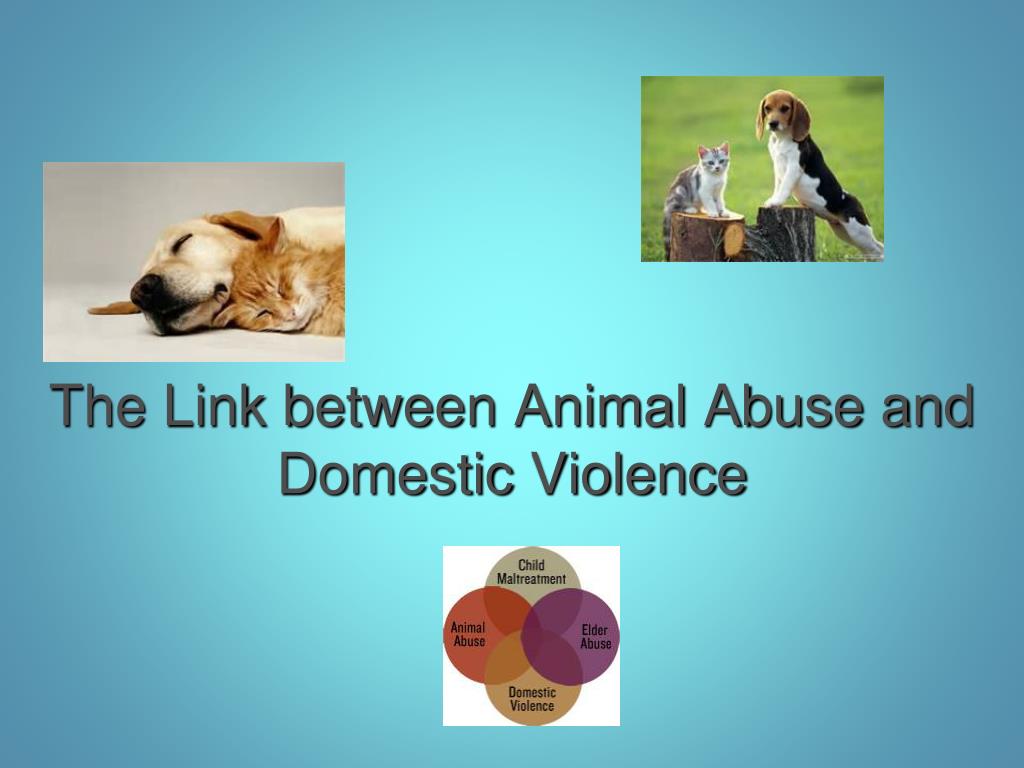Domestic violence is a harrowing reality for many individuals, often manifesting in insidious ways that extend beyond human victims. In recent years, research has increasingly illuminated a disturbing connection between animal abuse and domestic violence, challenging the conventional notion of these issues as isolated incidents. When a home turns hostile, it is not only the human inhabitants who suffer; pets and other animals, who are often considered family members, can become collateral damage in environments rife with abuse.
Understanding the intricate dynamics of this relationship is crucial. The violence inflicted upon animals within domestic settings is not an arbitrary act of cruelty; rather, it can be emblematic of deeper psychological issues at play, often reflective of a perpetrator’s need for control and domination. Victims of domestic violence frequently find themselves in a precarious position when it comes to their animals, creating a complex web of loyalty, fear, and trauma. This connection raises pertinent questions: Why do abusers often target pets? How can the plight of animals serve as a barometer for human relationships? And what implications does this have for society at large?
One of the primary reasons for the correlation between animal abuse and domestic violence lies in the psychological profile of the abuser. Individuals who resort to violence against their partners may also exhibit aggression towards animals as an extension of their controlling behavior. The abusive relationship often plays out in a cyclical pattern; threats or acts of violence against pets are wielded as tools of manipulation, pushing the victim further into submission. Victims who fear for their pets’ safety may hesitate to seek help, believing that doing so could endanger their animals. This fear creates a chilling effect that prolongs their suffering and enables the cycle of abuse to continue unabated.
Sociologists and psychologists have posited that violence towards animals serves several functions for abusers. It can function as a means of intimidation, a demonstration of power, or even an outlet for pent-up aggression. Several studies indicate that individuals who witness or experience animal abuse during childhood are at a higher risk of perpetrating similar violence in their adult relationships. Thus, these abusive patterns can be perpetuated across generations, making the issue all the more pervasive.
The emotional toll on victims—both human and animal—cannot be overstated. For those trapped in abusive homes, the presence of an animal often symbolizes a source of unconditional love and companionship amidst the chaos. The prospect of harming a cherished pet can evoke profound distress and hinder one’s ability to leave an abusive situation. According to numerous surveys, a staggering number of domestic violence victims have reported that their abuser had threatened, harmed, or killed their pets as a method of psychological control. This symbiotic relationship between human suffering and animal cruelty serves as a poignant reminder of the complexities embedded within violent households.
Moreover, the societal implications of this phenomenon warrant serious consideration. Animal abuse is frequently viewed through a lens of moral outrage, yet it is often not regarded with the same urgency as human violence. Consequently, animals trapped in abusive environments remain at an elevated risk, unacknowledged and unsupported. In a society where animal welfare is frequently overshadowed by priority given to human suffering, the dual epidemic of domestic violence and animal abuse invites a reevaluation of our values. It prompts a fundamental question: How can we advocate for the welfare of both human and non-human beings in tandem?
Increasingly, advocacy groups and shelters are recognizing the importance of addressing this intersectionality. Initiatives are being developed that not only provide refuge for domestic violence survivors but also for their pets. These programs aim to dismantle the barriers that prevent victims from fleeing abusive environments, offering protection and support to the entire family unit, irrespective of species. Battered women’s shelters—with animal-inclusive policies—are becoming more prevalent, illustrating a shift toward a more holistic approach to victim advocacy.
Training first responders, law enforcement officers, and social workers to identify signs of animal abuse in domestic violence cases also plays a crucial role. An understanding of these dynamics can lead to more comprehensive interventions and a more compassionate response to victims’ needs. Key to this effort is the dissemination of awareness and education, empowering individuals to recognize the signs of abuse not just in humans but in animals as well.
This critical connection between animal abuse and domestic violence underscores the necessity for comprehensive solutions that address the underlying psychological and societal factors contributing to these issues. By fostering empathy for all beings, advocating for the protection of animals, and equipping communities with the tools to recognize and combat domestic violence, we can begin to forge a path toward a safer and kinder society.
Ultimately, the plight of animals in violent households serves as a powerful entry point into the broader conversation surrounding domestic abuse. Understanding this relationship not only equips advocates and communities with the knowledge needed to support victims comprehensively but also unravels the complex tapestry of violence that we must confront. In embracing a more inclusive perspective, we illuminate the interconnectedness of all forms of abuse, championing the urgent need for solidarity and action.






